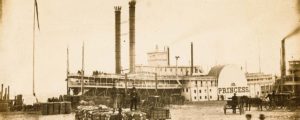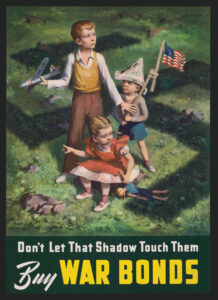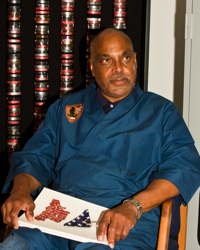
Duery Felton, a Vietnam War veteran, is curator of the huge collection of items left at the Vietnam Veterans Memorial. He spoke recently with Vietnam’s editors at the National Park Service Museum Resource Center near Washington, D.C.
To view photos of items left at the Wall, click here.
Q. When and where were you in Vietnam, and how were you wounded?
A. I was a radio telephone operator in the 1st infantry, in III Corps in 1967. I was wounded near the Cambodian border. That is all I will say.
When did you get out of the Army?
After getting wounded, I still had time left. I officially left the Army in 1968. I had a lot of injuries, life-threatening injuries. I am told that I am a miracle. I spent many years in and out of Walter Reed. Surgery, surgery, surgery. I’m still dealing with it.
How did you view the controversy over the design of the Vietnam Veterans Memorial?
I’m a native Washingtonian, so one day I was with a friend who had been a Marine at Khe Sanh and we went down to the Mall to find the site where the memorial was to be built. We were given wrong directions, and so we felt like, you know, “a Vietnam veteran gets screwed again.” Well, there was a tent on the Mall, and people were gathered around it, along with some Marines who were holding a vigil at the site, because allegedly there had been a threat to blow up the site. A lot of people had still not learned to divest the warrior from the war. Then, when the winning design for the memorial was finally picked, it was fraught with controversy as it was associated with an Asian American. And remember, Maya Lin’s design itself was considered radical and unconventional.
What was your first impression of the Wall?
You have to understand that in 1982 there were still really mixed feelings. At the time, there was still that stigma attached to being a Vietnam vet. So to be honest, I thought it was nice just to have something. Personally, I didn’t care what the memorial looked like, it was something, and we were now getting some recognition. And I also appreciated the fact that, other than Congress donating the land, it was paid for by private donations.
How did you get your job?
I had read an article about these things that were being collected, and I made arrangements to go see them. It just so happened that Voice of America was out the same day. So they were walking about the containers and I was explaining to them what some of the things were. I?didn’t know it but the site manager was standing behind me, verifying what I was telling them. A lot of people doing the cataloging didn’t have any military knowledge. So I then began volunteering.
At the time, the things from the Wall were not an official collection of the Park Service. We were a bastard child to be honest with you. Then, when the official designation for the collection came, it was decided some changes had to be made to set up a different program. Gradually, I was drawn into this, and now I’ve been here for some 20 years.
What kind of training have you had?
I trained at a number of curatorial schools. A lot of people aren’t aware of this but the National Park Service is a government museum organization. They always think of the NPS as parks. Think about all the sites that are actually museums.
Vets such as you must be a vital resource.
I always emphasize that when you look at me you are seeing just the distillation of a lot of people. It is impossible for anyone to know everything about the collection. I’m fortunate to have access to people who are preeminent in the field. The oddity is that some live in the area, just minutes away, but will not come here. They are still dealing with their own Vietnam experience. It is very peculiar, but everyone deals with it in his or her own way.
I have a friend who will only visit the Wall on the anniversary date of his return to the “world.” But if I have a question in their area of expertise, these guys get right back to me. A vet who worked here said to me one day: “Duery, I’ve often wondered why I spent my whole life learning what I thought was useless information. Now we find ourselves in a situation where that supposedly useless information is useful.”
An Unusual Phenomenon: Leaving Something
Was there any anticipation of the popularity of the Wall and that people would leave these incredible offerings?
No. And no one foresaw the huge amount of visitation. Some 25 million people have visited the Vietnam Veterans Memorial. No one could have predicted it, especially given the initial controversy.
 Were people leaving things at the Wall from the start?
Were people leaving things at the Wall from the start?
Well, this story may be apocryphal, but we love telling it. The first object to be left at the Wall was left by the surviving brother of a Navy pilot who had been posthumously awarded a Purple Heart. He asked and was granted permission to leave the Purple Heart. The construction crew was laying the foundation at the time, so he left the Purple Heart in the foundation, saluted, about-faced and left. That’s why we say the memorial has a heart.
Did you personally notice—and have a reaction to—things being left?
There were so many people and events down there early on. You know, think about it, it seemed natural at an opening such as this for people to be leaving things. It didn’t have the impact on me because during those first few days because it was expected. But it continued.
When did the National Park Service realize it had to formally deal with the offerings?
Between 1982 and 1986, the Park Service thought it could let the phenomenon run its own course. No one knew what to do with the objects. Then, in 1986 the Park Service concluded that it wasn’t going to stop, and decided to make the offerings a formal collection. These things are associated with the Wall, so they are considered historical artifacts.
What exactly is the Vietnam Veterans Memorial Collection?
Over time the term the Vietnam Veterans Memorial Collection has become an umbrella term for the collection of items left at the Wall, the three-man statue, the Vietnam Womens Memorial and, most recently, the In Memory plaque memorializing those individuals who have died post Vietnam. It is still evolving.
What does the act of leaving something at the Wall do for an individual?
A psychologist came up with four reasons why people leave things at the memorial. To apologize, to commemorate, to eulogize and to communicate. But remember, when you look at this collection, you are only looking at the tangibles left behind. Many don’t leave anything tangible, but you know that some won’t visit the Wall until late at night, when other visitors are gone. We are all trying to deal with the Vietnam experience.
How are those sentiments expressed?
There was once an Esquire article in which the author wrote about how he regretted not serving in Vietnam. Shortly after that we started noticing people leaving notes with similar sentiments, “I regret not having served in Vietnam.” There was an apparent cause and effect in that case. Then, for some reason, there was a period when we found many messages such as, “Doc, because of you I’m alive today, thanks.”
And then we were having medical corpsman leaving notes questioning themselves, did they do enough to save this or that person? You know, a corpsmen would treat you as best they could, then throw you in that chopper and never have contact with you again. So for them, the result was usually unresolved. But think of how many medics there were, how many of them had lives in their hands and, lets be honest about it, made choices of who would live and who would die. I still haven’t figured out why the corpsman, and this “thank you doc” thing was happening. This kind of thing seems to be cyclical.
Do donors have any expectation of privacy?
We do get sealed letters and we won’t open them. Sometimes people will leave letters unsealed. People are pretty savvy and realize the stuff will be kept. I think it may be a partial catharsis as well, a combination. We have a brown paper bag…we call it a field expedient, that I feel the person had no intention to leave anything and then they were so overcome by emotion they grabbed whatever was handy. Rangers have observed kids coming down, then looking through their backpacks and leaving a toy.
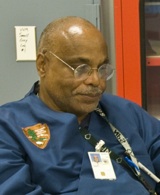 Is there a generational shift in the offerings underway?
Is there a generational shift in the offerings underway?
I think so. I have a theory. When a child dies, a parent is often emotionally unable to deal with going through their effects, sometimes the siblings are not. But when you get to the children or grandchildren, they have the emotional distance to deal with it.
What inspires this phenomenon, the war’s circumstances or the memorial?
For some reason circumstances came together, and it was time. Why do we have another generation that didn’t respond like this, the World War II vets? We wanted our memorial. Why? Anyone can hazard a guess, but you have to understand that before World War II you had a debate and then Congress acted under Article 1, Section 8 of the Constitution. That affirmation of America’s support was absent for Vietnam.
How has the Wall and its collection impacted other memorial projects?
We are the flagship with regards to this type of memorial. No one had any clue in 1982. We’ve collection exhibitions around the country and around the world. We’ve been called on to consult people in places like Oklahoma City, Columbine, Shanksville and Ground Zero in New York. Spain even sent in a delegation a few years ago to study our methodology because they are trying to respond to the terrorist bombing there.
At one time it was not unusual to go to a museum and see the bias of a curator or the organization in the exhibits, which typically included mostly things associated with the preeminents of the time. Then there began a rethinking, with a greater emphasis on social history. Well, this has always been a social history collection. Any bias regarding what is worthy of inclusion in this collection has been taken out of the hands of National Park Service, and been taken out of my hands as curator. We have no exclusions here, with the exception of live plant matter and unaltered U.S. flags.
Triage of Objects Left Behind
Does someone watch over the offerings to keep them from being ruined in the weather?
Let’s be candid, that’s impossible. The Park Service at one time considered building a visitors center where people could come and place these things. But it was determined if they did that it would be seen as encouraging an act, so they decided against it. People continue to leave things, out on the ground, it’s raining, it’s snowing. In time I noticed people started leaving things that were protected by plastic or mylar, so I think the word was getting out that we were preserving these things in perpetuity.
Sometimes we have to triage. Sometimes a photo is contacting wet glass and if it dries it will freeze to the glass, so we may decide to save the photograph. Sometimes glass is broken in the frames so we have to break out the rest of the glass so no one will cut their hands. Things come in moldy, looking like a cotton ball. I’ll take a photograph, but will have to dispose of the item.
How do you triage, and are items from the Vietnam era given preference?
We just have to see what’s in there and have to consider items on a case-by-case basis. It just varies. One time we had this huge wet flag come in. It took about four tables to dry it out. That was something we tended to immediately, because of all the moisture associated with it. Anything near it would get wet. So the idea was to take care of it quickly and isolate it. With photos, it just varies, depends on what comes in and how it comes in.
All objects that come in must be in quarantined for about one month. This gives us a chance to go through everything and check for bugs and things that are damp before moving them into the processing room.
How often do batches of items come in?
Depends on the season. From January until cherry blossom season in April, it is quiet in D.C. Then tourists start coming in. Memorial Day we are going to get hit. July 4 is not heavy at the wall, but anytime there is an event on the Mall it’s not unusual for people to want to walk over and leave something at the Wall. From Veterans Day to January it’s heavy because this is the time for traditional family gatherings, so visitors to the area also do sightseeing. Sometimes background events will drive the numbers of visitors and offerings.
I tell researchers to consider a few things when looking at the records. For example, 1990 was the 45th anniversary of the end of World War II, the 40th anniversary of the start of the Korean War, 50th anniversary of the U.S. Airborne, 200th anniversary of the Coast Guard. In 1991 you had the Gulf War welcome home parade, with about a million people involved. The 10th anniversary of dedication of the Wall was in 1992 and the Vietnam Womens Memorial was dedicated in 1993. Those were four extremely heavy years for visitation, but you have to be aware of background events to appreciate the spike. Everyone wants to hit the Wall. It’s constant, I don’t understand it.
A Harley?…What’s Next, a Huey?
Any of the gear left ever stump you?
No. But I look at some things and ask why they are here. Like the beret from the Air Force Jolly Green Giant, the Air Force recovery group. The beret just shouldn’t be here. That insignia affixed on the beret is highly sought after, a very valuable item. Plus, they left a note with it about their involvement in the famous rescue of Bat-21. So you have this information and beret that are very valuable. As far as we know we have the only Army Medal of Honor to be voluntarily returned to the government by a recipient. It belonged to Chaplain Charles Liteky who saved about 20 men in Vietnam. A lot of people are leaving their dog tags here. I have mine hanging on my bedpost.
What offering has been most moving?
What stands out in my mind is the Black Beret with recon insignia for the 101st Airborne Division. It has a note on it saying, to the effect, “20 years ago I was the last survivor of this ambush.” I’ve always questioned why, 20 years after the fact, are you releasing this? That is something that has always got to me. There is also a backpack with rocks in it and a note that says, “I’m finally able to put down my troubles.” That’s what he says. Then there is the North Vietnamese Army belt buckle. It came with a note attached to it that read, “I couldn’t believe at the time that I wanted this.” As I say, if you were to ask everyone who works here, they will all tell you about something different that is most moving to them.
What’s the wildest thing anyone left?
The motorcycle. That was out of left field. We have this joke that some day we’ll get a call saying, “Come on down here and get this Huey someone left at the Wall.”
But someone has to get it there.
Do not think that someone wouldn’t find a way. Look, we have the Potomac River right there.
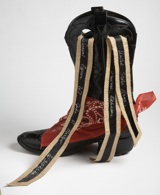 Any items come in that you felt you had to find the donor?
Any items come in that you felt you had to find the donor?
We had a punch bowl set with 26 silver goblets given to a commander of a fighter squadron in the Navy retiring. When doing the Offerings at the Wall book, we were nearing end of project and they wanted to shoot the goblets. The goblets have the names inscribed on sides of each two-man crew of each fighter plane. Well, they just wanted to shoot the goblets. I said I don’t know how they should be set up, but I don’t know where they came from, so we did an arbitrary set up. Afterward, I told a friend I didn’t feel good about how we shot it, but I don’t know the donor. My friend says “I do.” So I said “Will you do me a favor tell the donor that we need to know who was recovered, or the crews that were partially recovered.” Traditionally, in the Navy if an entire crew is lost the cup is inverted, if a crew was partially recovered the cup is placed on its side. We ended up doing a re-shoot and we set it up and got it right.
Then we have the Native American ceremonial lance we were including in an exhibition. Some Native Americans some feel things such as this should not be seen by non-Native Americans. I said, listen they are part of the Vietnam experience, there are at least 300 Native Americans that we know of on the wall. They should be part of the exhibition. So I called some Native American friends in the Southwest and they flew out at their own expense with a shaman and a princess and performed a blessing ceremony of all Native American items. They thanked us for our sensitivity. They also explained how the lance should be displayed. We then found out the cedar case for the lance was built by a Native American who was a prisoner of war in Vietnam. So we were able to maintain the respect and integrity of the piece and find this important additional information that was not evident.
Secrets at the Wall
What does the Wall say to you?
No one dies in isolation, it always affects someone else. It’s like a concentric circle.
Does the Wall have healing power?
“Reconciliation” is written into the memorial’s legislation. It said the monument was to be inscribed with names of all those who died in Vietnam and was to make no political statement about the conduct of the war. It is to be a place of national reconciliation.
Has it achieved that?
To a point. People still have to confront the decisions that they were making when they were young. That’s another issue.
Will someone be doing this in 20 years?
The average age now of the Vietnam vet is 62. Will there be another generation that will be interacting like this? I don’t know.
What best describes the collection?
This collection is a treasure trove of the impact of a generation.
What’s the hardest part of your job?
Living up to everyone’s expectations. There are so many demands upon us. It is unceasing, to be honest, unceasing. And I know it will be this way for a long time.
Isn’t this emotionally difficult for you?
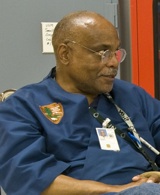 Of course, that is why you always need to step back. The preacher told me to step back, don’t take it home with you. I tell everyone who comes here they have my permission to take a deep breath and step out of the room anytime. This collection is raw, uncensored. I tell them they have to learn to read, but don’t read. Learn to keep their distance and not take it home with them. It’s hard. But I also tell people this is more than just gloom and doom, it’s also a celebration of life. That’s not understood by many people. It’s a living collection. We’re now dealing with another generation, as items are left by children and grandchildren of veterans and people who just want to say, “Thank you.”
Of course, that is why you always need to step back. The preacher told me to step back, don’t take it home with you. I tell everyone who comes here they have my permission to take a deep breath and step out of the room anytime. This collection is raw, uncensored. I tell them they have to learn to read, but don’t read. Learn to keep their distance and not take it home with them. It’s hard. But I also tell people this is more than just gloom and doom, it’s also a celebration of life. That’s not understood by many people. It’s a living collection. We’re now dealing with another generation, as items are left by children and grandchildren of veterans and people who just want to say, “Thank you.”
Have you left anything at the wall?
That’s my secret.
To view photos of items left at the Wall, click here.

